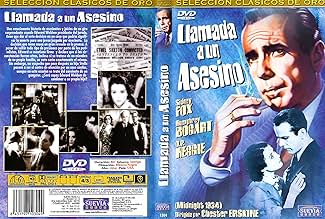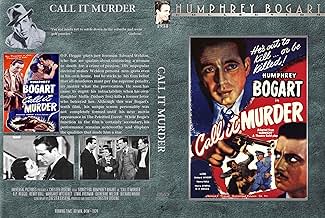Ajouter une intrigue dans votre langueThe foreman of a jury asks questions that send a woman to the electric chair for a murder committed in the heat of passion. On the night of the execution, his actions come back to haunt him.The foreman of a jury asks questions that send a woman to the electric chair for a murder committed in the heat of passion. On the night of the execution, his actions come back to haunt him.The foreman of a jury asks questions that send a woman to the electric chair for a murder committed in the heat of passion. On the night of the execution, his actions come back to haunt him.
- Joe Biggers
- (as Lynn Overman)
- Dist. Atty. Plunkett
- (as Moffat Johnson)
- Ingersoll
- (as Henry O'Neil)
- Jury Member
- (non crédité)
Histoire
Le saviez-vous
- AnecdotesBased on the flop play, Midnight (1930). Drama. Written by Claire Sifton and Paul Sifton. Directed by Philip Moeller. Guild Theatre: 29 Dec 1930- Feb 1931 (closing date unknown/48 performances). Cast: Maud Allan, Glenn Anders (as "Bob Nolan"), Harold Bolton, Zena Colaer, Josephine Hull (as "Mrs. Weldon"), William R. Kane, Jack La Rue (as "Gar Boni"), Tom H.A. Lewis, Harriet E. MacGibbon (as "Ada Biggers"), Clifford Odets (as "Arthur Weldon"), James Parker, Frederick Perry, Francis Pierlot (as "Richard McGrath"), Charles Powers, Samuel Rosen, Neal Stone, Robert Strange, Fred Sullivan, Royal Dana Tracey, Louis Veda (as "Photographer"), Harold Vermilyea (as "Joe Biggers"), Linda Watkins. Produced by The Theatre Guild.
- GaffesDuring Stella and Gar's first meeting in the court room, audible clicks can be heard between their line.
- Citations
[first lines]
Ethel Saxon: You see, I loved him. I mean I loved him when... when he didn't love me anymore, day in and day out watching him get further and further away from me. I could see in his eyes when he looked at me... I could see he hated me, hated me because I needed him. Oh, I was so frightened, so mixed up. It's so horrible to see someone who's become part of you slipping away, slowly. To feel helpless and empty, lonely and frantic, wanting to do something, anything, anything to bring him back! To patch things up, to try to tie together the few remaining bits of happiness... and then, that awful day when he drew the money from the bank and I knew the end I'd been waiting for had come, that all my fears were realized, that he was going away. I went mad... he mustn't go away, he mustn't go! Anything to stop him, anything! That's all I wanted to do
[starts to weep]
Ethel Saxon: I didn't mean to kill him, I only meant to stop him, to stop him from going away.
- Versions alternativesIn the retitled version, "Call it Murder" Humphrey Bogart's billing is moved to above the title.
- ConnexionsFeatured in Le Psychopathe (1989)
It opens with a woman testifying on her own behalf, talking about what led up to her killing her husband. She is a well dressed, what you would call "credible" looking 30 something woman, and it looks like maybe things are going to go her way, with it sounding like she was under terrible duress, just not wanting her husband to leave her. And then the jury foreman, Edward Weldon, asks a question that when answered by the accused, makes the entire thing suddenly sound premeditated. She is found guilty of first degree murder and sentenced to death. Meanwhile, watching the trial, is a gangster (Humphrey Bogart) and the foreman's daughter, Stella (Sidney Fox). They start up a romance.
This is where things get odd. Apparently everybody is blaming the jury foreman for the woman's conviction, when he simply asked a question. The news media is blaming him. Even his own family is questioning what he did. The night of the execution, several months later, he is beginning to buckle under the pressure, but he says the law is the law, the same for everybody, that an execution is hard, but then so is murder. He talks about the D. A. being the best and most just D. A. the city has had for years. That same night, his daughter Stella is very upset that her gangster boyfriend is going to collect a "hard debt" and then take the train to Chicago, maybe leaving her forever. And strangely these two events - the woman's execution and Stella's hearbreak, intertwine.
The film is one of the earliest mainstream films - made by Universal - I've seen to debate the morality and fair application of the death penalty. It also has lots to say about the power of suggestion, and what ambitious people will do to make sure their climb up the ladder is not impeded. It has lots of interesting intercuts and the cinematography will at times focus on what peoples' hands are doing as they are speaking, to reflect their mood.
Yet it seems like lots of people don't care for this one. Maybe it is because it fell into the public domain and it was probably falsely advertised as "starring Humphrey Bogart" when, if there is any central figure, it is probably O. P. Heggie as the jury foreman. The fact that he has rather wild looking hair and resembles a thin version of the ghoul in Carnival of Souls doesn't help his sex appeal, if in fact dealers of VHS and DVD copies of this film were trading on that. Then look at the original lobby card - it has Humphrey Bogart and Sidney Fox in a romantic embrace. That and the title had to have misled 1934 audiences too.
I'd recommend it for all of the reasons I've mentioned. Just don't expect Bogie to have lots of screen time. Also starring Lynn Overman as a very ungrateful son-in-law and Henry Hull as a lying yet pontificating reporter.
Meilleurs choix
- How long is Midnight?Alimenté par Alexa
Détails
Box-office
- Budget
- 1 000 000 $US (estimé)
- Durée1 heure 16 minutes
- Couleur
- Rapport de forme
- 1.37 : 1
Contribuer à cette page



















